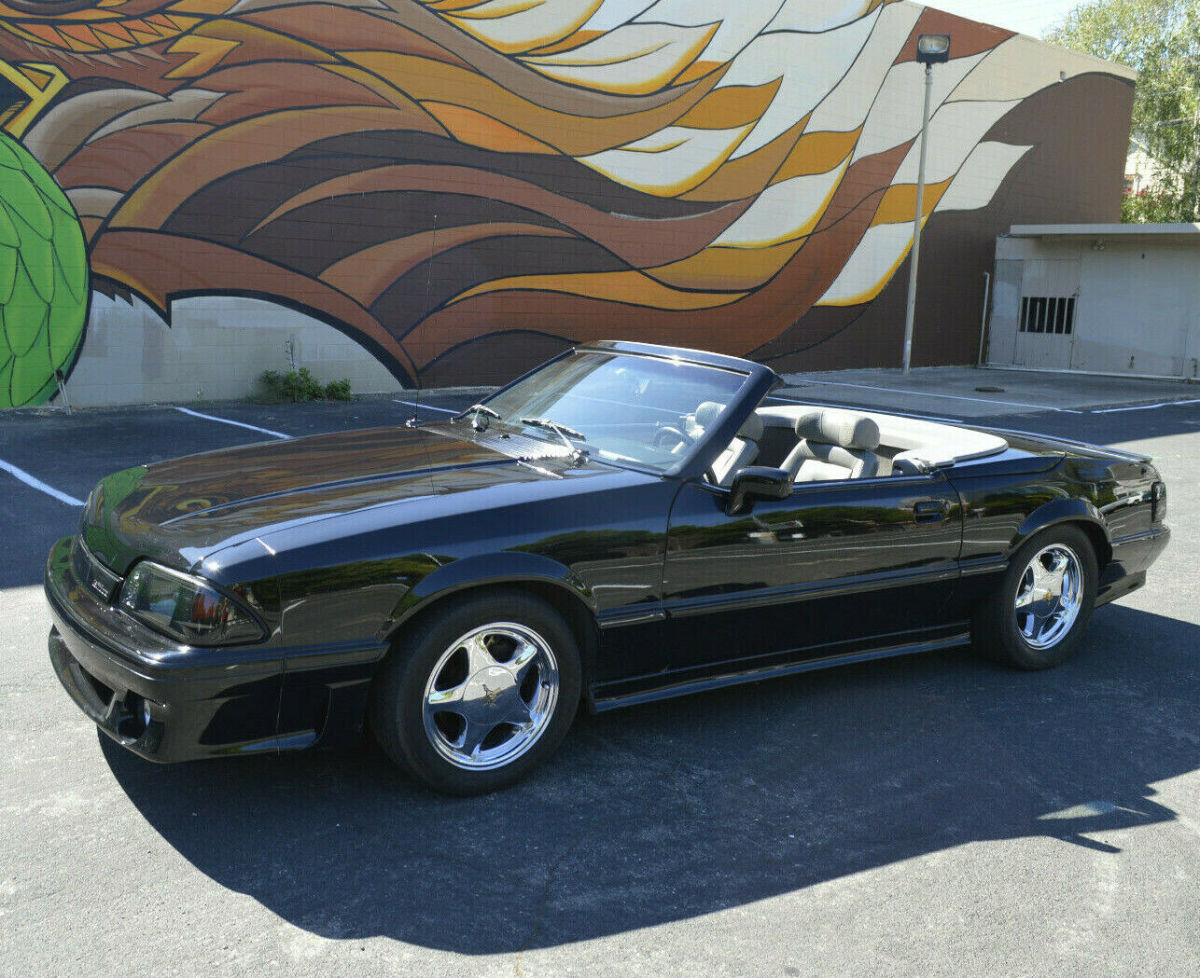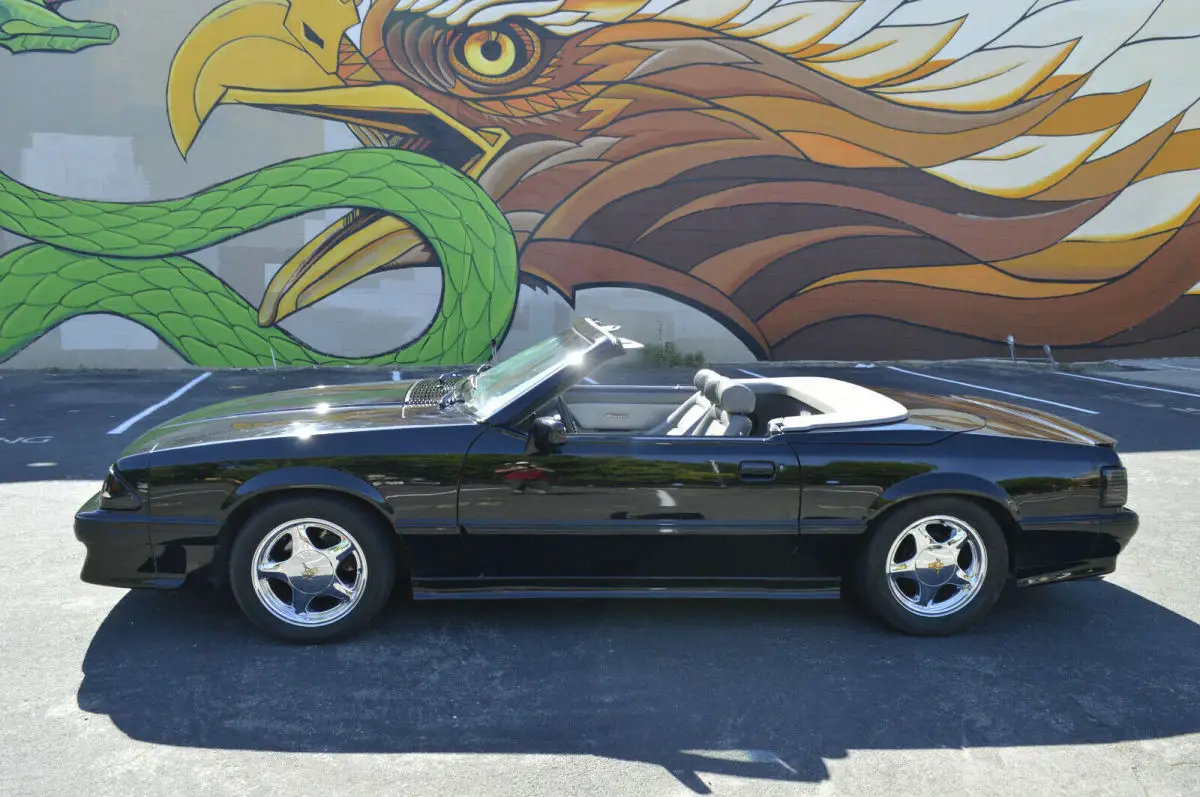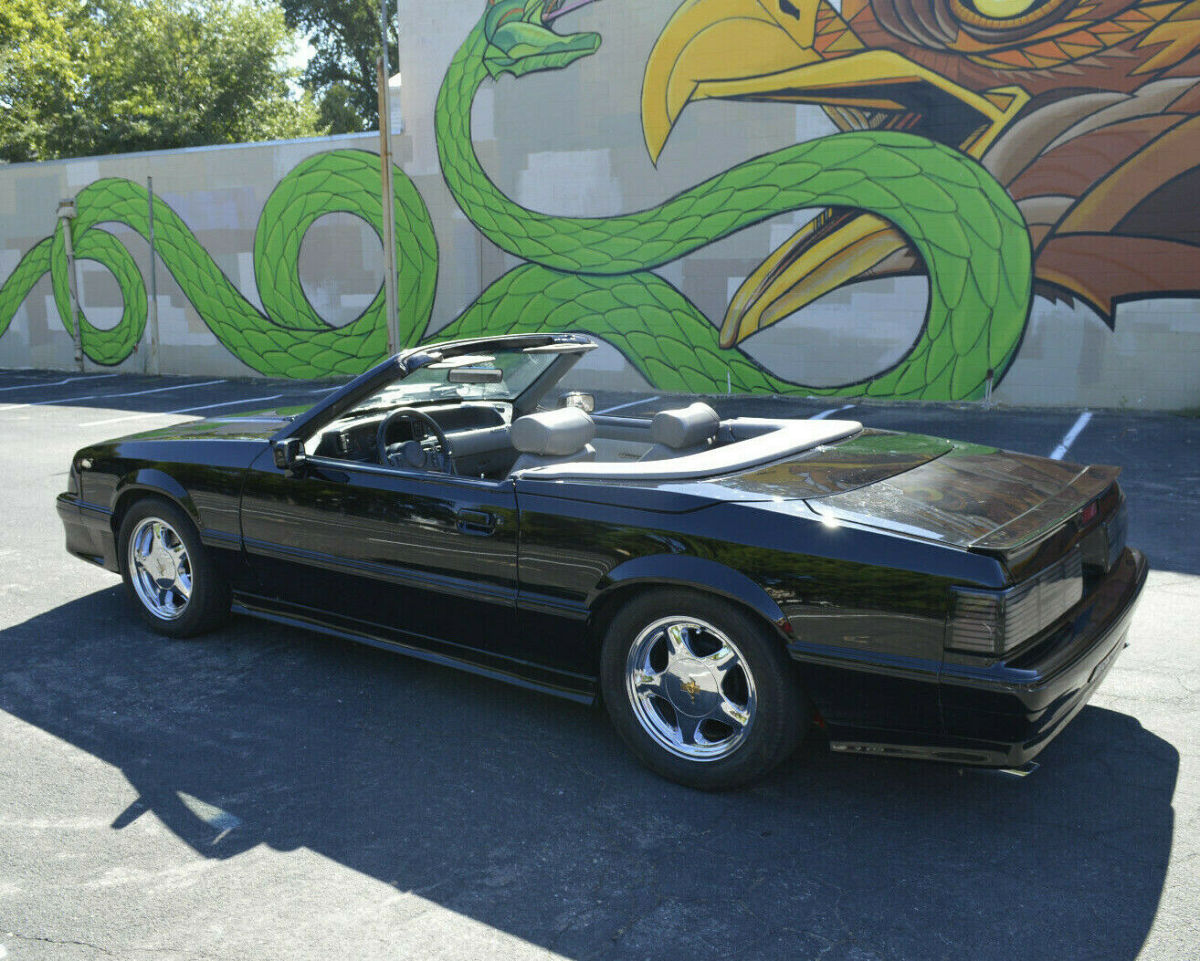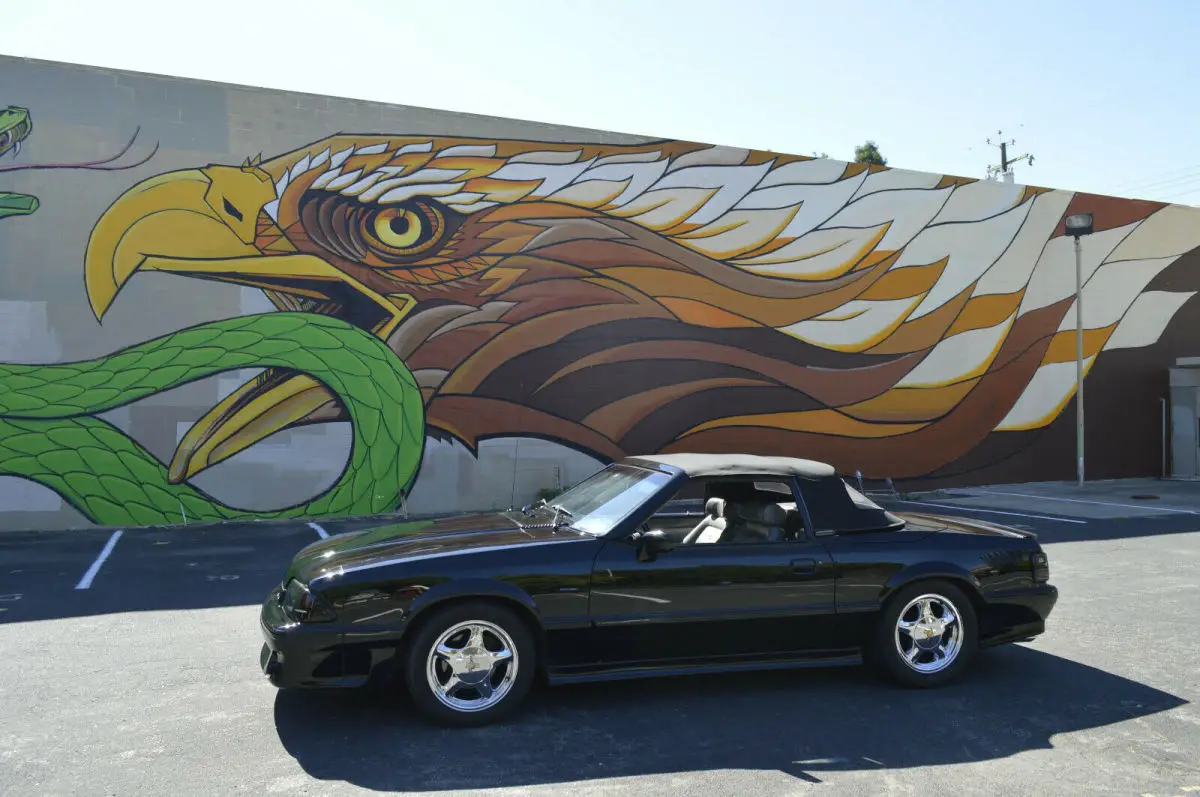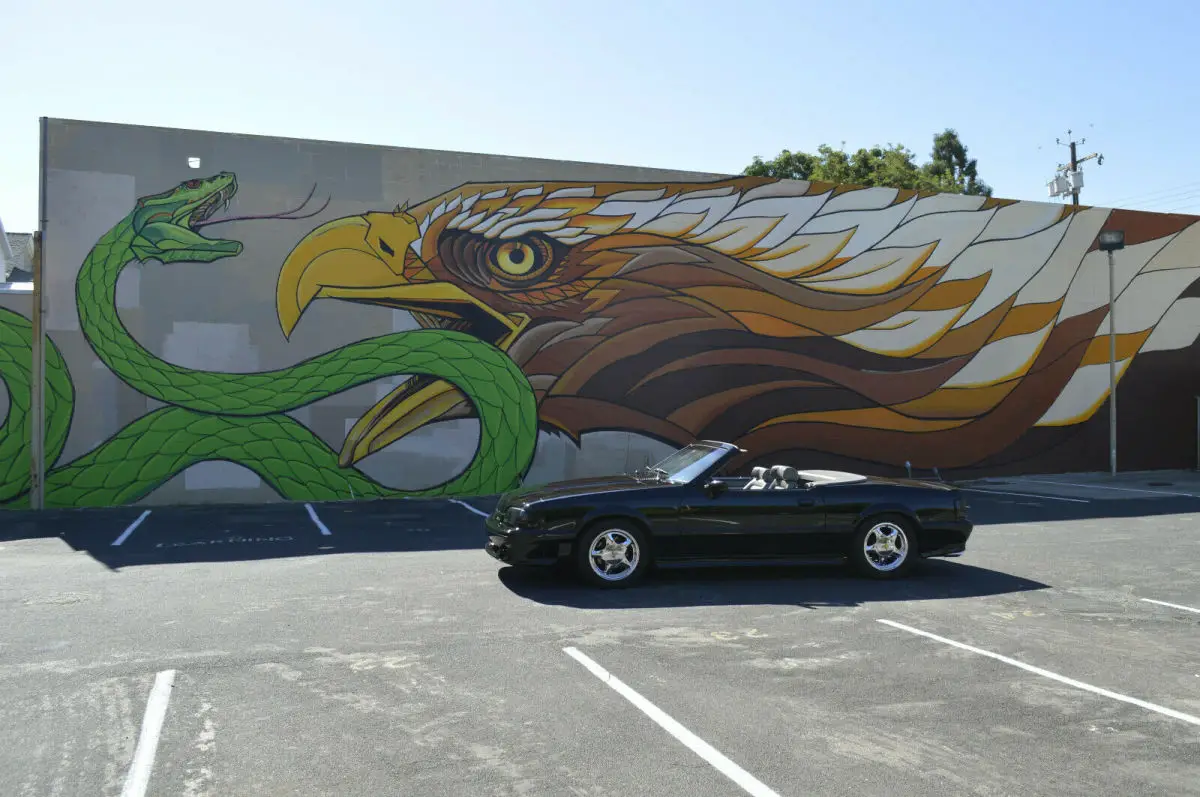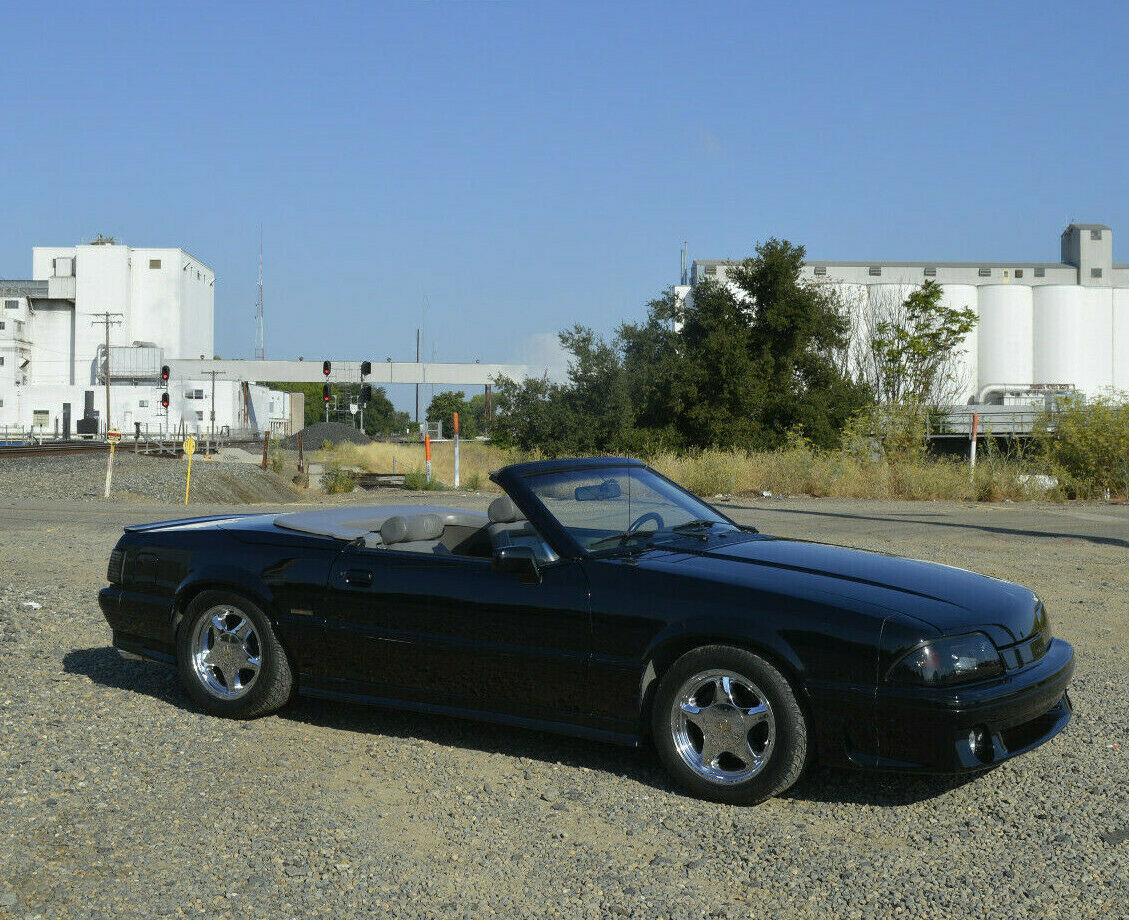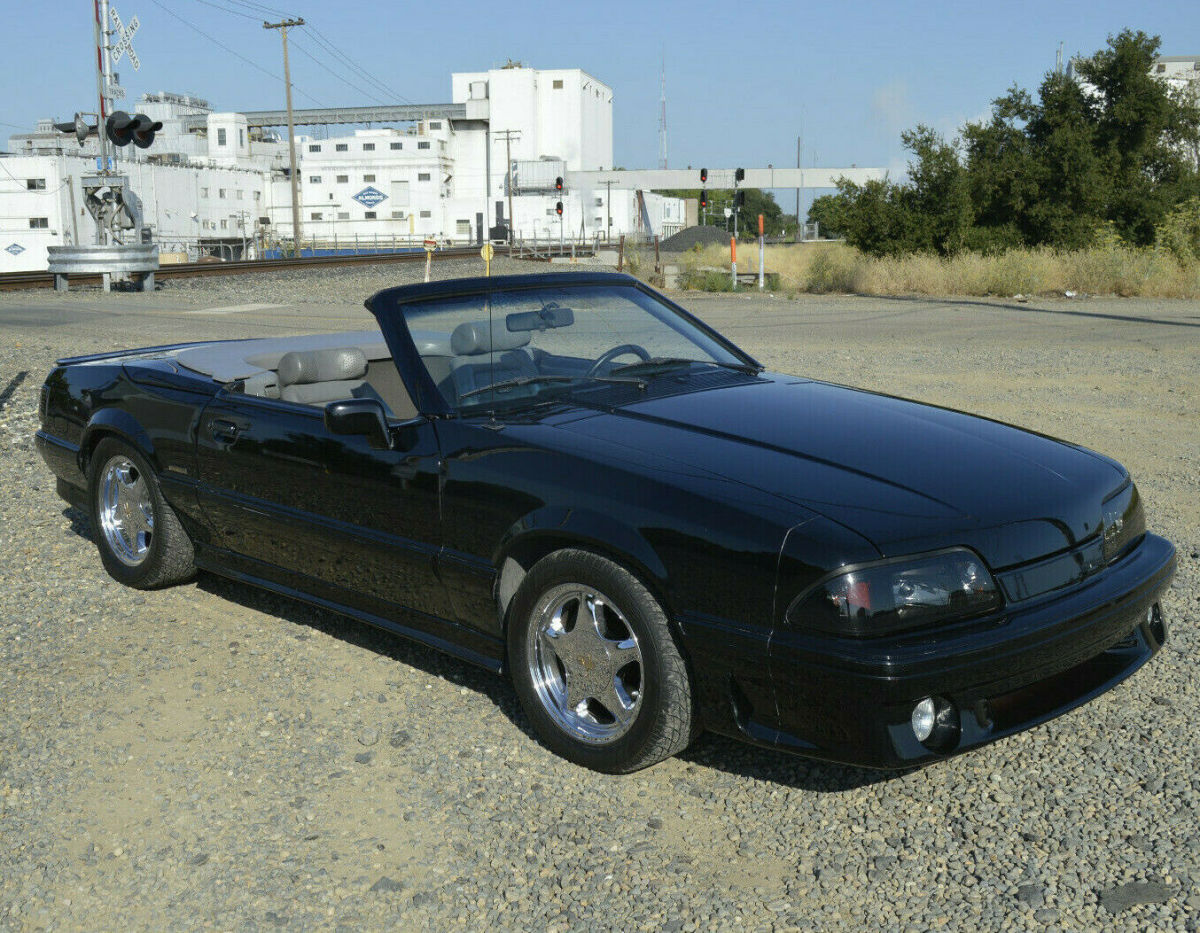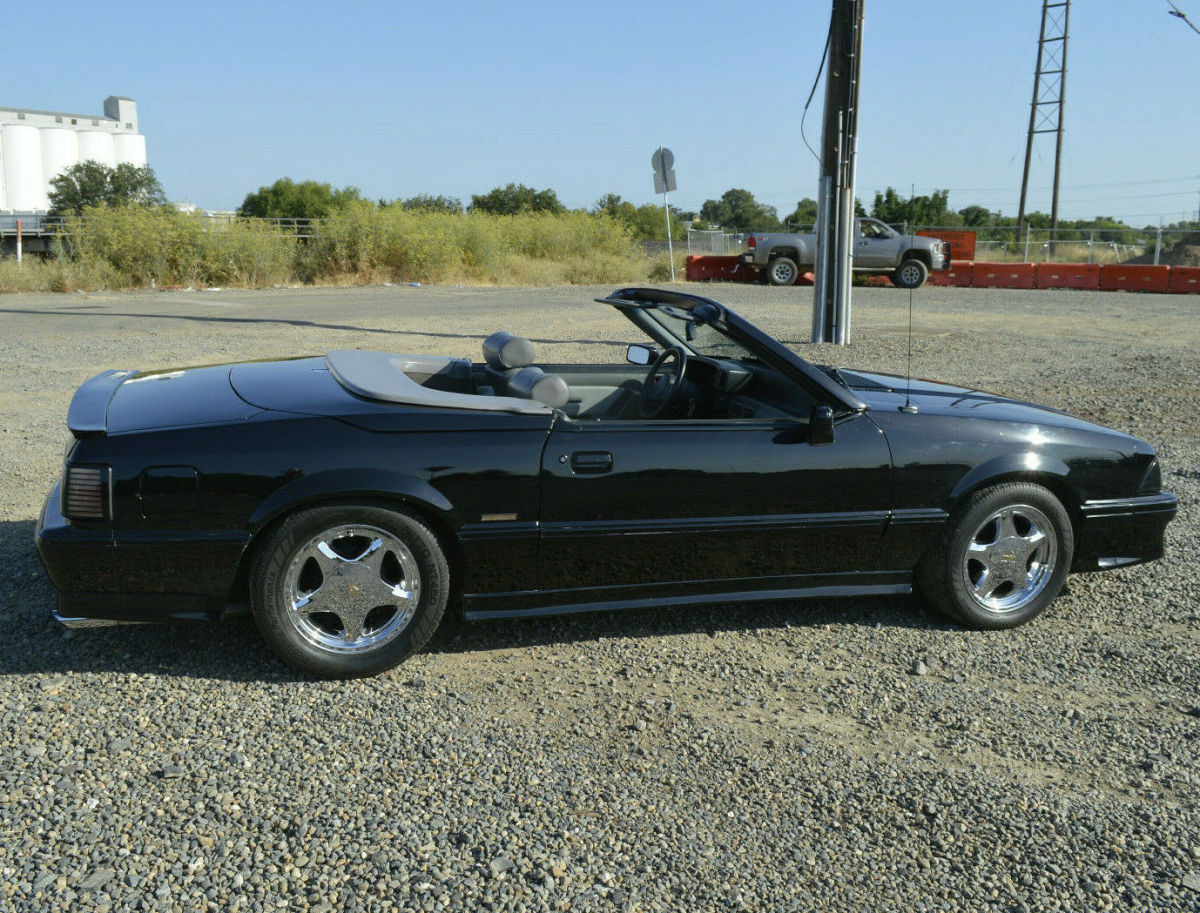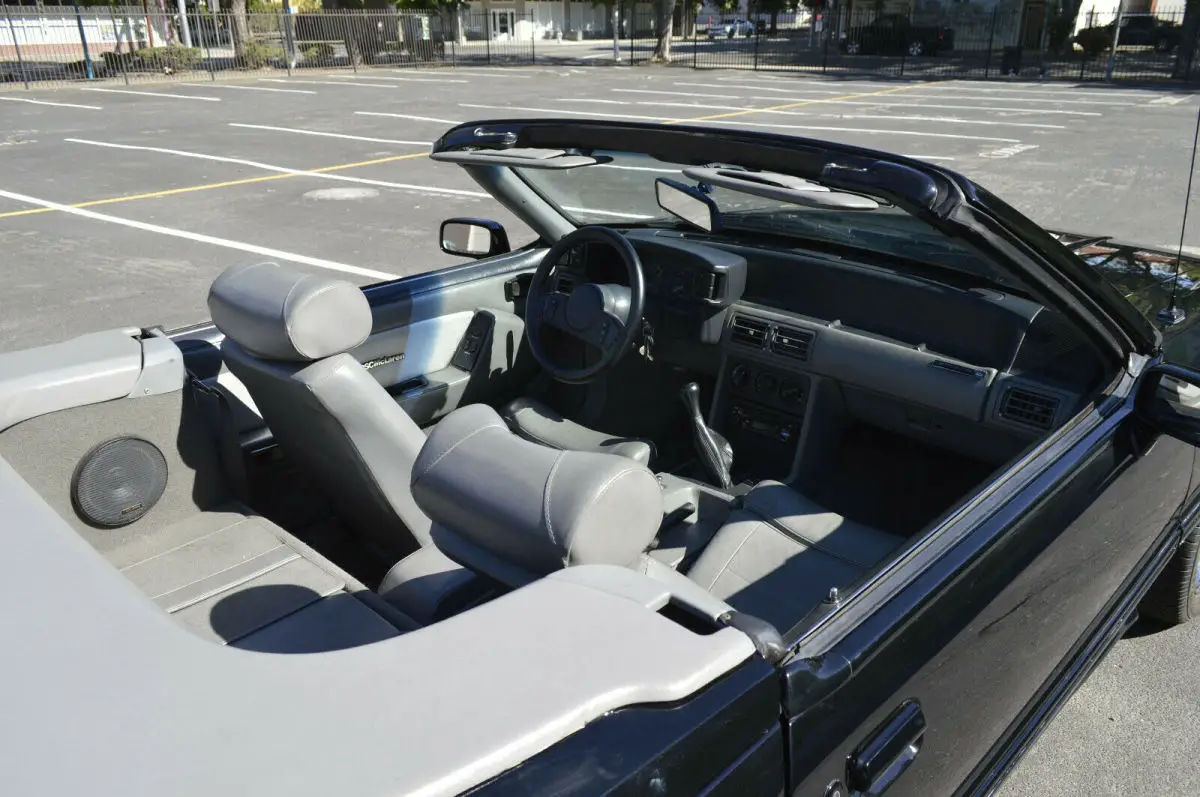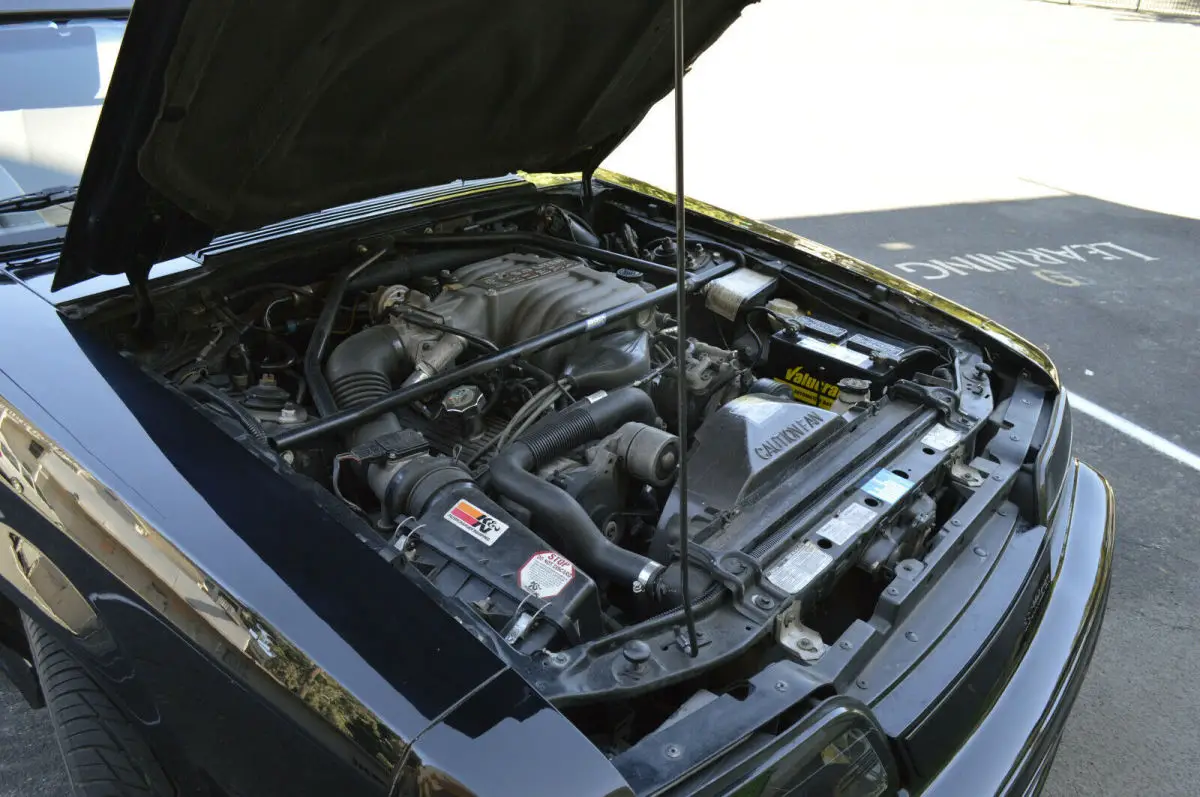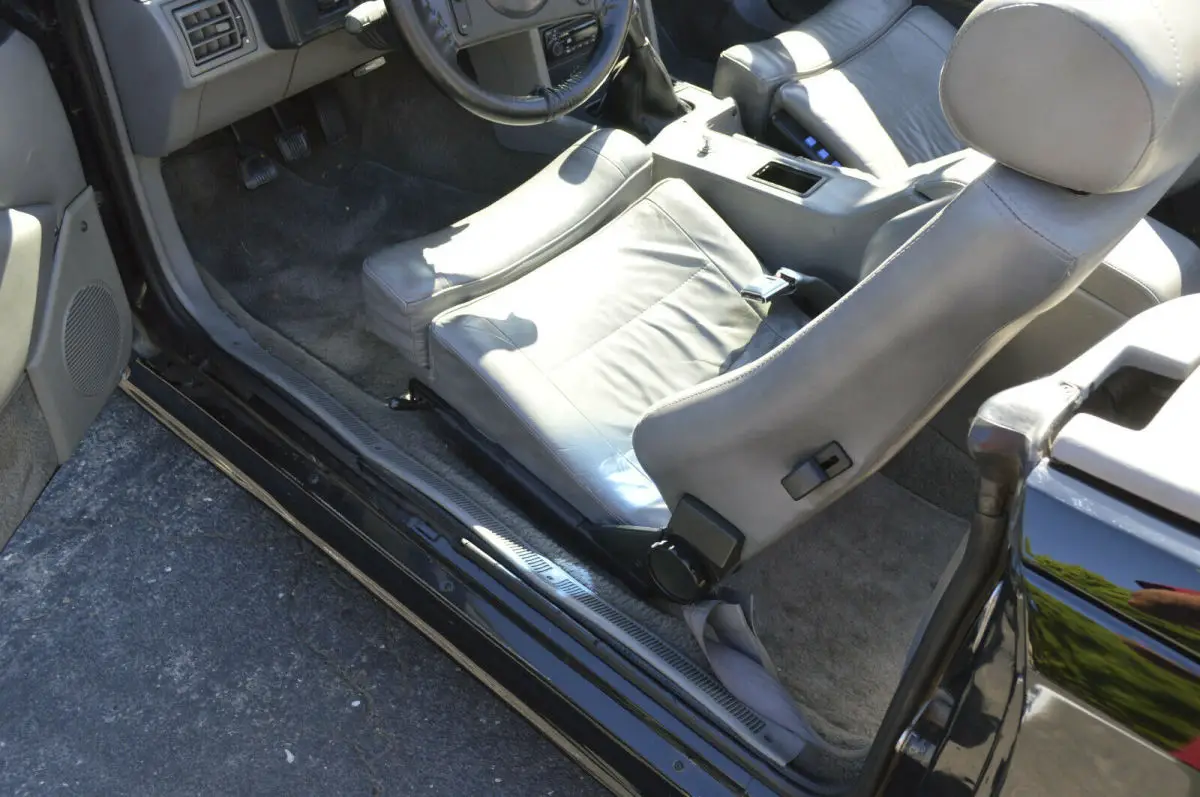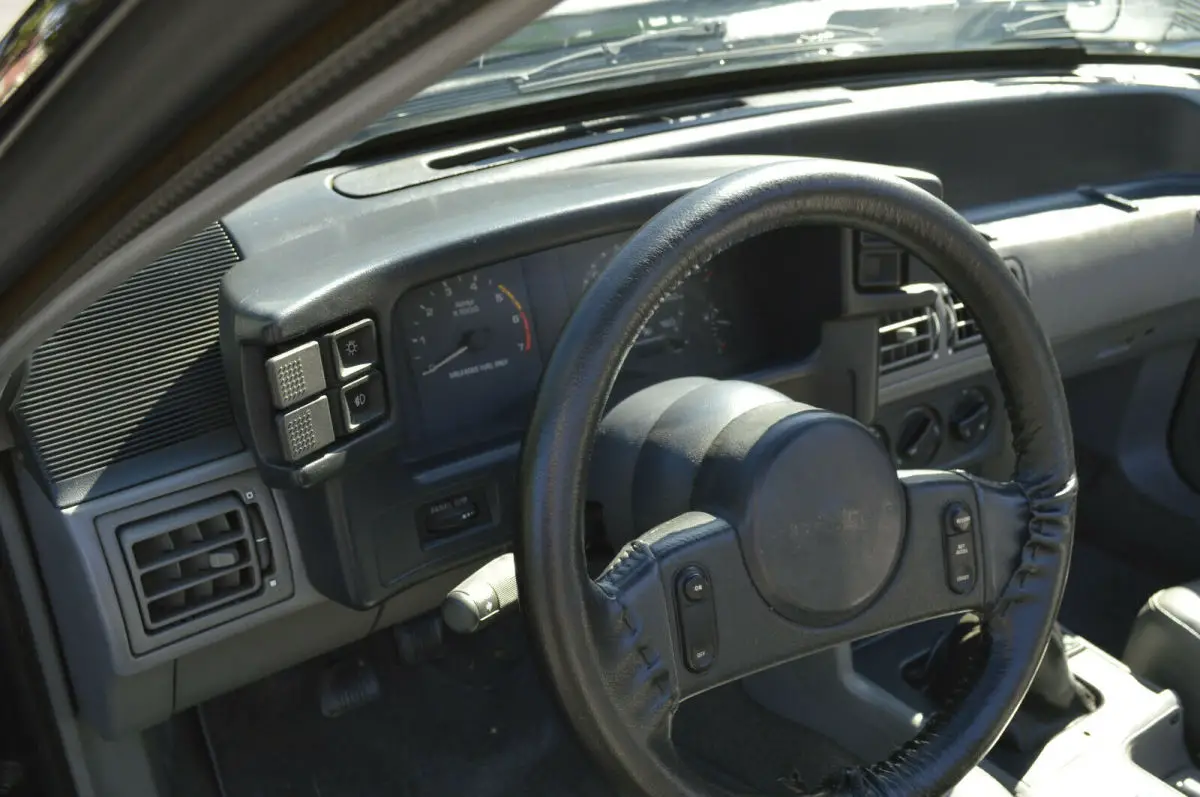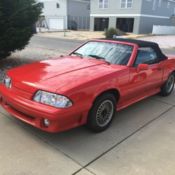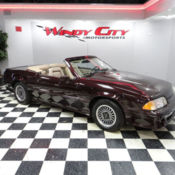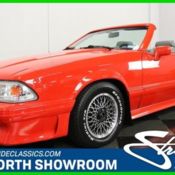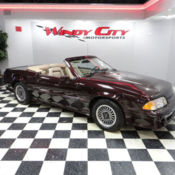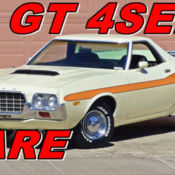ASC McLAREN Convertible Cobra 5.0 V8 5 Speed Muscle Car hot rod FOX BODY vtg 50
| Make: | Ford |
| Model: | Mustang |
| SubModel: | COBRA |
| Type: | Convertible |
| Trim: | ASC McLAREN |
| Year: | 1988 |
| Mileage: | 67000 |
| VIN: | 1FABP40E7JF157374 |
| Color: | Black |
| Engine: | 5.0 V8 |
| Cylinders: | 8 |
| Fuel: | Gasoline |
| Transmission: | Manual |
| Drive type: | RWD |
| Interior color: | EBONY |
| Vehicle Title: | Clean |
| Item location: | Sacramento, California, United States |
| Extras |
|
Air Conditioning, Cruise Control, Power Locks, Power Windows CD Player |
| Listed by |
| Private seller |
Description of 1988 Ford Mustang ASC McLAREN |
|
1988 ASC McLaren MustangFast and Fun! Clear CA Title 1 of only 1015 produced in 1988 Quickly becoming a sought after model in the already popular Fox Body generation. This car is a solid driver with some handling upgrades. DrivetrainVery strong running 302ci 5.0 V8Car fires right up and does not smoke or missLater model Cobra fuel injection and aluminum Valve covers addedK&N filter5 speed manual transmission shifts well through all the gears Body/ExteriorFactory body with no major dentsPaint is presentable for a driver (she's a 10 footer)Smoked lenses front and rear adds to its aggressive demeanorGround effects in good condition no broken/cracked piecesTop and release hatch in good working orderTop is in good shape with no rips or tears ChassisGreat handling car!Added strut tower brace under hoodAftermarket Flaming River manual rack added with tighter ratioStops and steers better than factory16" aftermarket chrome 5 spoke "Pony" wheelsNitto Extreme Performance tires in great shape (look almost new)245/50-R16 rear225/50-R-16 front Interior Factory interior $1500 Recaro seat option (last year offered) No major rips or tears to the upholsteryAll gauges working MiscNew BatteryNew dual exhaustClear CA titleAmplifier installed in trunkOverall great lil carCould use some TLC/detailing from a new owner and is mechanically sound See below for some history of the McLaren and mustang $500 DEPOSIT WITHIN 24 HRSPAYMENT IN FULL WITHIN 7 DAYS OF PURCHASE. VEHICLES TO BE PICKED UP WITHIN 14 DAYS OF AUCTIONS END UNLESS OTHER ARRANGEMENTS HAVE BEEN MADE PRIOR TO BIDDING. PLEASE FEEL FREE TO ASK ANY QUESTION BEFORE BIDDING Please view the numerous photos belowclick thumbnails below for larger images $500 DEPOSIT DUE WITHIN 24 HOURS OF AUCTIONS ENDPAYMENT IN FULL WITHIN 7 DAYS OF PURCHASE. VEHICLES TO BE PICKED UP WITHIN 14 DAYS OF AUCTIONS END UNLESS OTHER ARRANGEMENTS HAVE BEEN MADE PRIOR TO BIDDING. SOLD AS IS WHERE IS NO WARRANTY EXPRESSED OR IMPLIED BUYER RESPONSIBLE FOR ANY SHIPPING CHARGES AND MAKING SHIPPING ARRANGEMENTS. THE VEHICLE IS AVAILABLE FOR AND WE WELCOME PERSONAL INSPECTIONS BY YOU OR AN AGENT ON YOUR BEHALF. BY BIDDING YOU INDICATE YOU HAVE REVIEWED ALL THE INFORMATION AND ARE SATISFIED WITH THE INFORMATION PROVIDED. By Matt Litwin from Muscle Machine Magazine No 2014... If Ford truly has a cornerstone automobile, it's the Mustang. One could, of course, reason the Model T, or even Thunderbird, as more suitable candidates, as each represents significant milestones in their own right. The T saved Ford as a company while affordably motorizing the masses. The T-Bird--initially Corvette's only domestic competition--paved the path for the personal luxury car boom for the better part of three decades. But the Mustang is different. Due to its expansive list of standard and optional features since its mid-1964 introduction, it has appealed to everyone from the economically minded motorist to the high-performance gearhead. And, in spite of a pair of near-death experiences along the way, the Mustang's versatility and legendary performance prowess have been bolstered by 50 years of continuous production, much to the chagrin of its rivals. Yet, despite what the Mustang has come to symbolize for the millions who have held title to their own examples, it has been absent from the sports roadster market. Consider this: All of the basic traits that would put it on the same playing field as the imports have existed since day one, including the long hood/short rear deck profile, the sleek yet timeless styling, and, except for a 10-year hiatus, a convertible top. Its technical exclusion from said market boils down to one simple fact: The Mustang has been burdened with two extra seats. Truthfully, even this assessment is not absolutely correct, since, for a time, the Mustang could have been obtained as a true two-seater, courtesy of ASC/McLaren. The concept of combining European roadster flair with Ford's pony car sprouted its first roots in the early Eighties when Detroit customizer Peter Muscat decapitated a Mustang and fitted his own convertible top and tonneau cover. Believing there was a market for such a car, Muscat approached American Sunroof Company (ASC) founder Heinz Prechter, who was already working on a project with McLaren. Shortly thereafter, the concept was presented to Ford, which was already relaunching the Mustang convertible. The same body style, however, would be conspicuously absent from Mercury's Fox-platform Capri. Mercury supplied ASC/McLaren specially modified coupes, beginning with the 1984 models. Production conversions included a custom interior, special body moldings, front air dam, rear spoiler, wheels and graphics. Already planned as a low-production vehicle, output was stifled by a sticker price well in excess of $20,000--far beyond the cost of a production Mustang convertible, even in GT trim. Capri sales, however, were in steady decline, and by the conclusion of the '86 season Mercury discontinued it; thus conversion work shifted to Mustang for '87. Like Mercury, Ford sent fixed-top coupes to ASC/McLaren. Again, appearance mods continued; however, unlike ASC/McLaren's work with Buick during the same model year, this collaboration did not result in engine modifications. Even without mechanical tweaking, ASC/McLaren Mustangs still ended up costing more than $20,000. This, coupled with a downturn in the economy and disputes between Muscat and Prechter, led to the demise of the entire project by 1990. Side skirts and exceptionally discrete badging were hallmarks of the ASC/McLaren conversion project. So, too, was the custom-made top with its three-piece rear-window cutouts. During the four-year span, just 1,806 Mustangs were converted, 1,015 of which were done in 1988, making them bona-fide rarities in the muscle car community. Today, ASC/McLarens are supported by a well-organized club and parts network. In addition, the ASC/McLaren Mustang is a comparatively affordable muscle car, although performance cars from the Eighties have seen a recent upswing in collectability among enthusiasts. ENGINE The ASC/McLaren Mustangs were equipped with the 5.0-liter (302-cu.in.) V-8, and timing could not have been better. Ford, recognizing increased competition from Chevy's Camaro, made adjustments to the existing electrically fuel-injected engine that boosted output from the previous year's 200 hp to 225. This was achieved by installing a larger intake plenum and a 60-mm throttle body, revised Ford truck cylinder heads and 9.0:1 compression forged pistons. For all intents and purposes, the engine, installed standard in every Mustang GT, changed very little during this four-year span. What to watch for: During the 1988 model year, Ford made a running change to the high-output 5.0 when a mass airflow sensor--used for fuel metering--replaced the previously employed speed-density system; however, this only affected cars sold in California. This change was then made to all 5.0 H.O. engines for the 1989 model year. On paper it may seem a minute gesture in the name of efficiency, but the mass airflow sensor has made it easier for owners to make performance modifications without sacrificing drivability, as this system is less sensitive to manifold vacuum readings. Even if you have found an '87 edition, performance alterations can be made with ease, thanks to an expansive aftermarket network. It should be noted that, even modified, the 5.0 engine has long proven itself as a durable unit, able to withstand most punishing conditions and driving styles.Below the ASC/McLaren hood was a standard high-output 5.0-liter V-8. Unlike some other notable Mustang conversions, McLaren did not make any performance modifications to the 302-cu.in. engine during the four years of conversion work. TRANSMISSION As with the Mustang GT, the ASC/McLarens were offered with a Borg Warner T-5 five-speed manual transmission as standard equipment. It was a unit that had been introduced to the Mustang in 1983 and was further upgraded in subsequent years; the '87-'90 versions are of the "World Class" variety. The four-speed automatic overdrive (AOD) transmission was offered as an option. Both are reliable units that last for many miles of standard driving, and both can be upgraded for more severe duty if necessary. What to watch for: All Borg Warner T-5 manuals were filled with Mercon Dextron II/III automatic transmission fluid due to the tiny oil transfer holes that lubricate the needle bearings. It is important to use the correct fluid (many of these T-5s were filled with heavy-weight gear lube by inattentive service mechanics) and to monitor fluid levels to help the unit's longevity. Additionally, there were two upgrades, the first of which came in 1989, with a running change from a seven-tooth to eight-tooth speedometer drive gear. For 1990, the torque capacity was increased by installing second and third gears made from improved alloys with a coarser pitch.CHASSIS Starting in 1979, the Mustang had been constructed on the unit-body Fox platform featuring - with minute variations - a 100.5-inch wheelbase. Supporting the McLaren version was a stock Mustang GT independent front suspension system consisting of struts, performance springs and a 1.3-inch anti-roll bar. At the opposite end was the Mustang's Quadra-Shock system, comprised of two vertically installed gas shocks working in unison with two conventional gas shocks horizontally mounted to the differential--the durable 8.8-inch Traction-Lok--to prevent unwanted twisting and wheel hop; an 0.83-inch anti-roll bar was also included. The Mustang GT's power front disc/rear drum brake system was standard equipment. The other significant change has to do with the unit-body structure. With the removal of the Mustang LX's fixed top, structural rigidity was compromised, a condition that was rectified with the installation of reinforced rocker panels. This was a deviation from practices employed during the Capri program, which added bracing below the rear cowl.What to watch for: The 1987 and up Mustangs featured revised front-end geometry with new strut housings. Strut travel was also increased. Combined, it provided the Fox platform with greater cornering stability. Additionally, the aftermarket industry has been providing suspension and brake upgrades for many years. Although owners of truly rare cars tend to maintain stock characteristics, it's still possible to find an example with such upgrades installed. BODY & INTERIOR Contrary to what one may think, Ford did not send incomplete, body-in-white LX coupes to ASC/McLaren. Each was complete, including the aforementioned 5.0 engine and GT underpinnings. Henry Huisman, who worked at ASC and is now the owner of Paradise Automotive--supplier of NOS, reconditioned and used ASC/McLaren parts in Odessa, Florida (www.ascmclaren.com)--tells us they were also fitted with the GT front fascia from the factory. "Once they took delivery of the car, they cut the top off and removed the interior in order to fit their own manually-folded top and power metal tonneau cover. Like the Capri, they pulled the windshield back about 20 degrees, which necessitated the installation of side windows unique to these cars. They also added side skirts, taillamp covers and a rear spoiler, and removed the stock emblems," explains Henry.Once the exterior modifications were completed, the cars were then painted a variety of special colors, which varied from one year to the next. "Ford shipped the cars, usually finished in silver or black, so in most cases the door sticker--which would have the paint code--will not match what ASC/McLaren ultimately applied. The underside of the hood should still exhibit the original Ford color," cautions Henry. Interiors were also extensively modified. With the rear seat removed, additional storage was made available, Ã la Corvette, below the stowed top and corresponding cover. The front seats were given extra padding and re-covered in embroidered leather; door panels and the armrests were also redesigned. Standard Mustang GT instrumentation remained, however. Standard features included power steering, tinted windows and even air conditioning later in the series; however, options such as a Whistler radar detector and Recaro bucket seats were few. The Recaros were dropped after 1988, mostly due to the fact few buyers selected the $1,500 option. |
 Home
Home Contact us
Contact us NEWEST CARS
NEWEST CARS SELL YOUR CAR
SELL YOUR CAR FAQ
FAQ